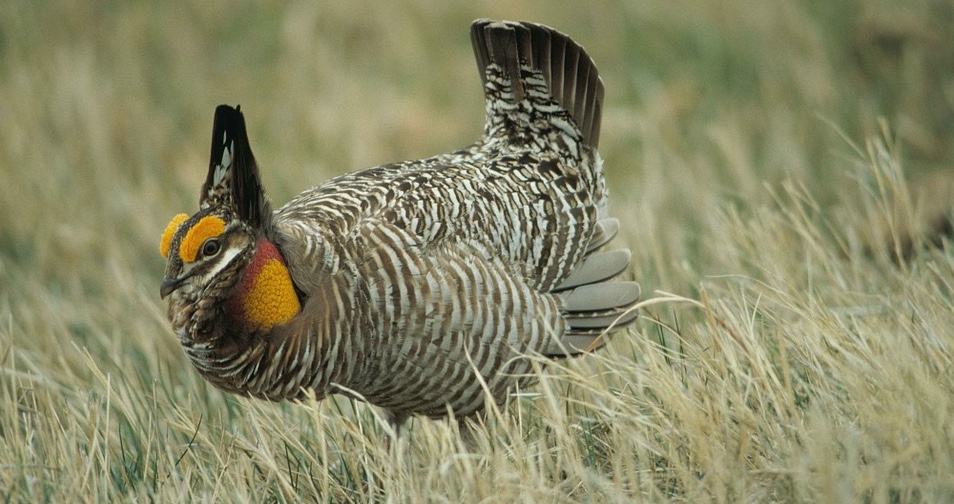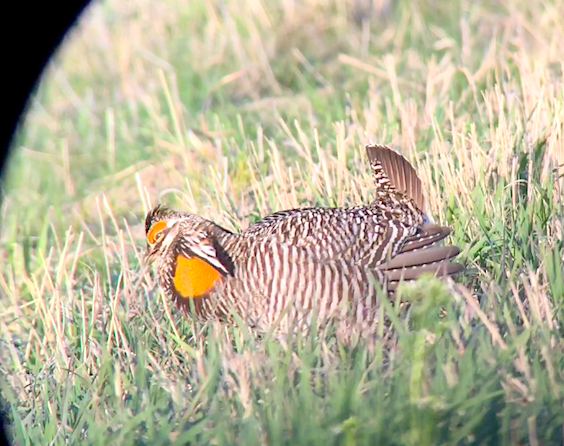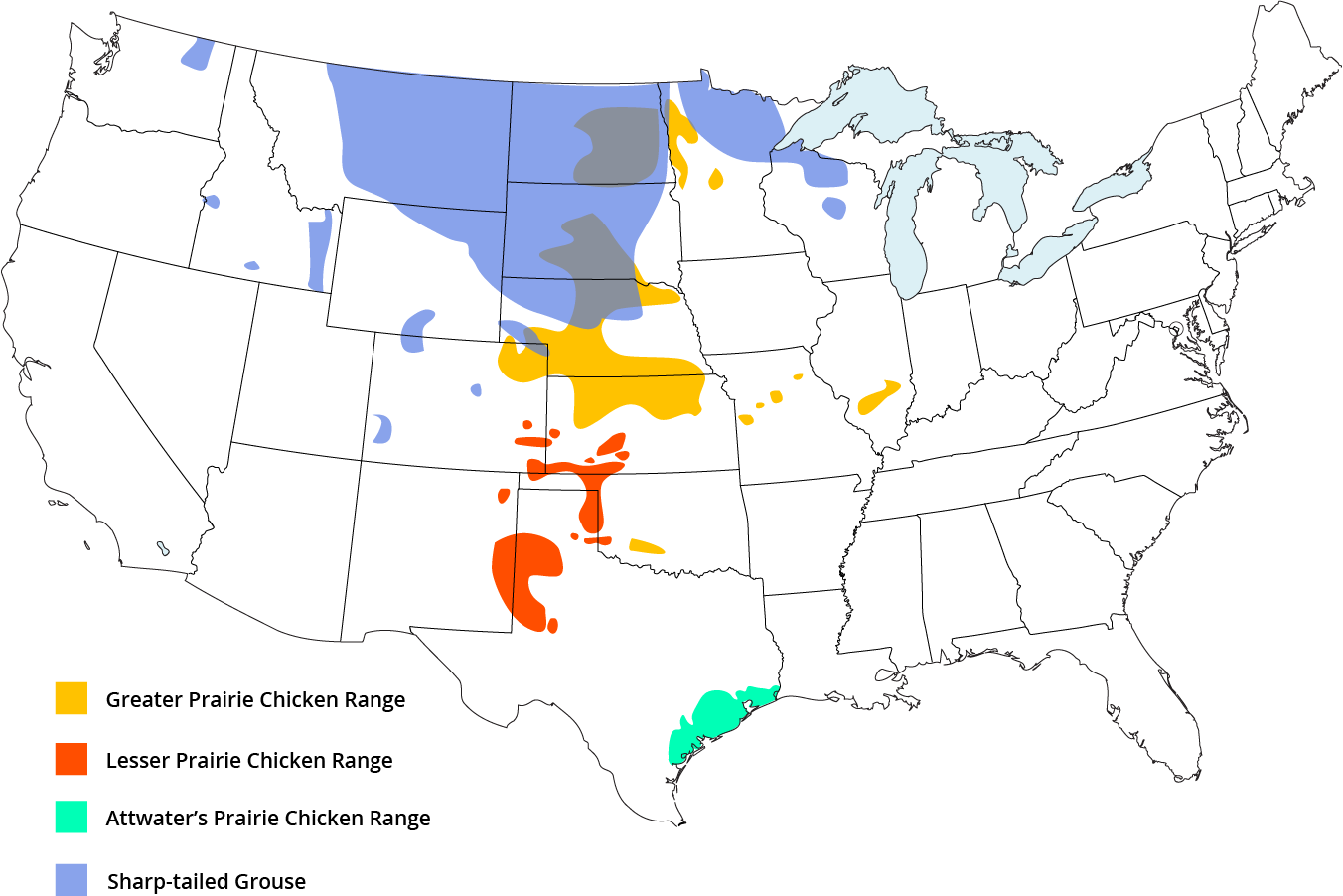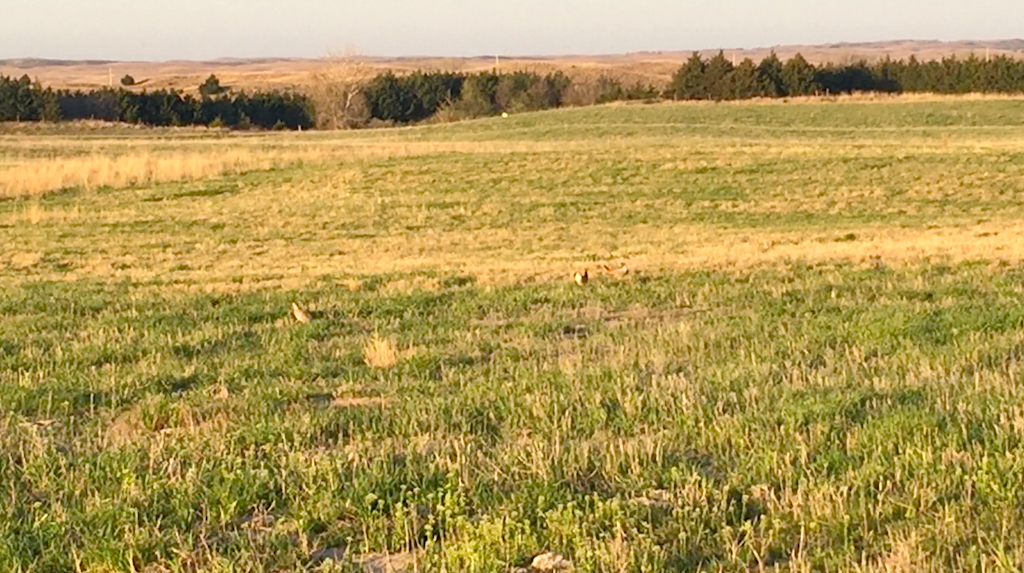
Prairie Chicken Conservation
Our mission is to help the prairie chicken by financially helping ranchers/landowners create more habitat and protect leks/booming grounds.
Prairie Chickens, the original Boomers
When prairie chickens gather each year on their leks or “booming grounds”, they perform unique and entertaining dances complete with booming calls that can be heard up to 1.5 miles away. Once, millions of these birds inhabited the midwest, but over the years their numbers have declined, leading one of the species to extinction.
Species
There are four remaining species of prairie chickens in the United States, Greater Prairie Chicken, the Lesser Prairie Chicken, Attwater’s Prairie Chicken, and the Sharp-tailed Grouse. The Heath Hen went extinct in 1932. According to the U.S. Fish & Wildlife service, the Attwater’s Prairie Chicken is considered one of the most endangered birds in North America.
The Dance
Prairie Chickens are most known for their dance which is referred to as “booming”. Each year in the spring, male prairie chickens gather on their leks to compete for female attention and show dominance by stomping their feet and inflating the colorful air sacs along their necks. As they dance they emit low, long hums punctuated by clucks and cackles. Most prairie chickens will return to the same lek year after year.
Raising Young
The vast majority of prairie chicken hens will lay their eggs within 2 miles of the booming grounds. They seek out nesting sites with tall, dense vegetation that are surrounded by shorter vegetation. This habitat allows the prairie chickens to hide their nests but still see approaching predators. The difference in vegetation height is also useful for raising their young. The denser brush can offer hiding and protection while the shorter, less dense brush is easier for a chick to move through as they search for food. Chicks will stay with their mothers for 3 months. Typically, less than half of prairie chicken nests will hatch as predation is common.
Conservation
Prairie chickens benefit from a diversity of vegetation. It’s important for them to have areas of shorter grasses for their leks so its easier for females to see and select a potential mate. As such, many prairie chickens are found in grasslands where vegetation has been kept short by haying and/or grazing.
The type of grazing practices that a rancher or land-owner implement can greatly impact the plants grown in an area. While shorter grasses are important for booming grounds, having small areas of taller vegetation near the booming grounds is important for hens to hide their eggs and protect chicks.
Cultivating Land that’s Good for Prairie Chickens and Livestock
- Keep 30-50% of lands within 1 mile of leks as suitable nesting ground for prairie chickens
- In preferential nesting ground areas, pastures should be stocked at low to moderate rates to create different levels of height and density in vegetation.
- Avoid excessive litter on the ground which provides shelter for rodents and beckons predators to populate the area.
- Leave standing dead vegetation through the winter to help females in selecting upcoming nest sites.
- Use rotational grazing at moderate stocking rates or patch-burn-grazing to encourage diverse plant species, densities, and heights.
- Remove smooth bromegrass from brooding areas. This plant can cause chickens to get wet and freeze to death. Instead, grow native bunch grasses and widely spaced rhizomatous grasses to provide a better habitat for chicks.
Participate
Ranchers and land owners can contact their local Natural Resources Conservation Service (NRCS) office for technical and financial assistance to address prairie-chicken habitat needs through certain range management practices.
- Greater Prairie Chickens in the Sandhills - Information and guide to land types in the Sandhills as they relate to the Greater Prairie Chicken. Includes monitoring practices and data sheet starting on page 16.
- Greater Prairie Chickens and Grazing - Article from the NRCS (National Resources Conservation Service)
- Lesser Prairie Chicken Initiative Conservation Practices - Learn about conservation practices that can improve the health of your rangeland while supporting the conservation of the Lesser Prairie Chicken.
- Lesser Prairie Chicken Initiative Website
- Attwater’s Prairie Chicken Management Guidelines
- Resource Management for Attwater’s Prairie Chicken
- Sharp-tailed Grouse Information and Habitat Management
About Us
Prairie Chickens Forever seeks to increase awareness and knowledge of the prairie chicken while helping ranchers and landowners voluntarily enhance prairie chicken habitat by improving the long-term sustainability of their ag operations.
Give Today
You Can Also Send A Check To:
29610 175th Rd Kearney, NE 66847
How Your Donation Is Used
- Provide money to ranchers and farmers to help offset maintenance costs
- Provide income lost to ranchers choosing to voluntarily diminish their livestock numbers
- Preserve Prairie Chicken nesting areas
contact
Email keith@prairiechickensforever.com to find out how you can help or if your property qualifies.


